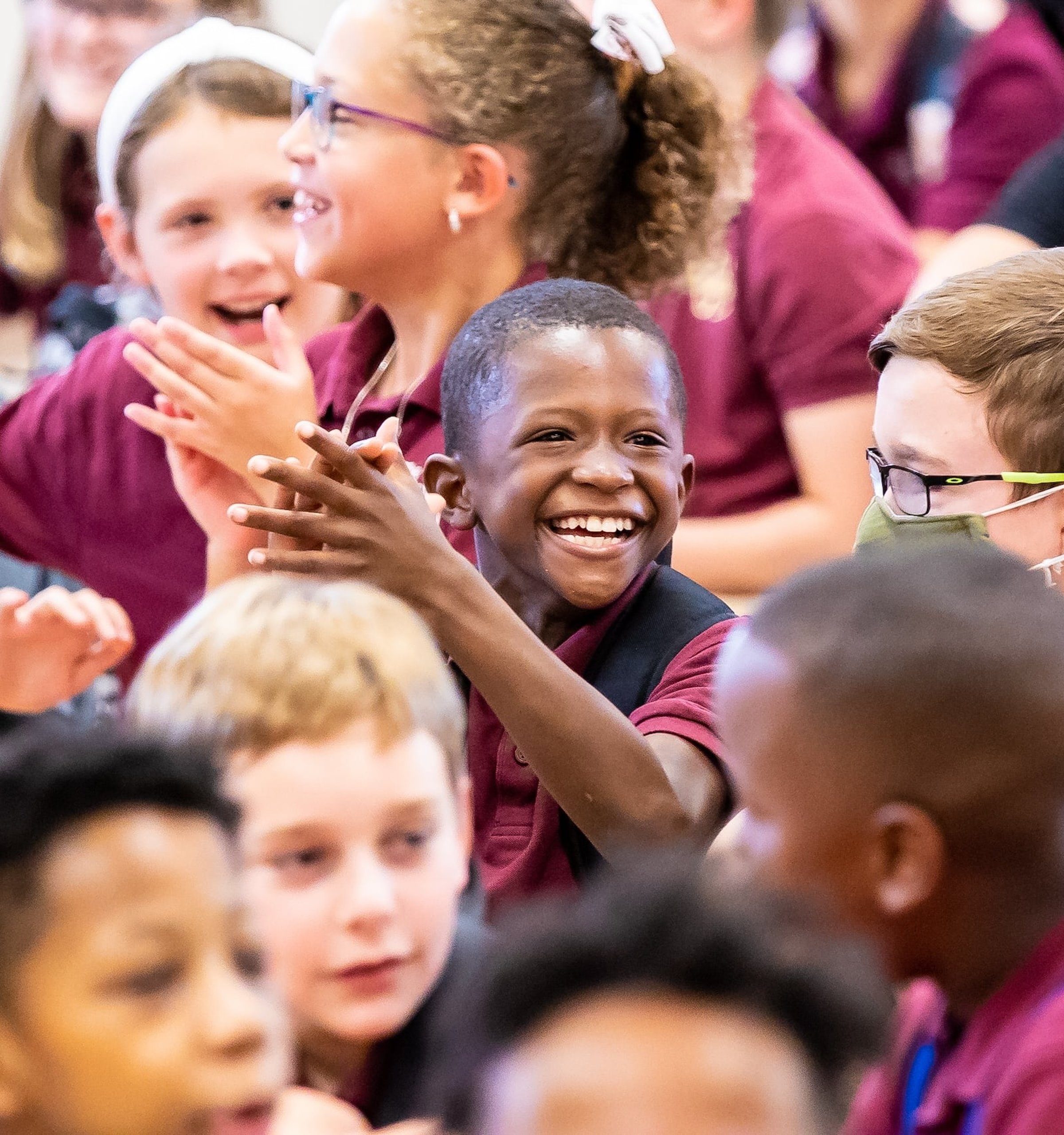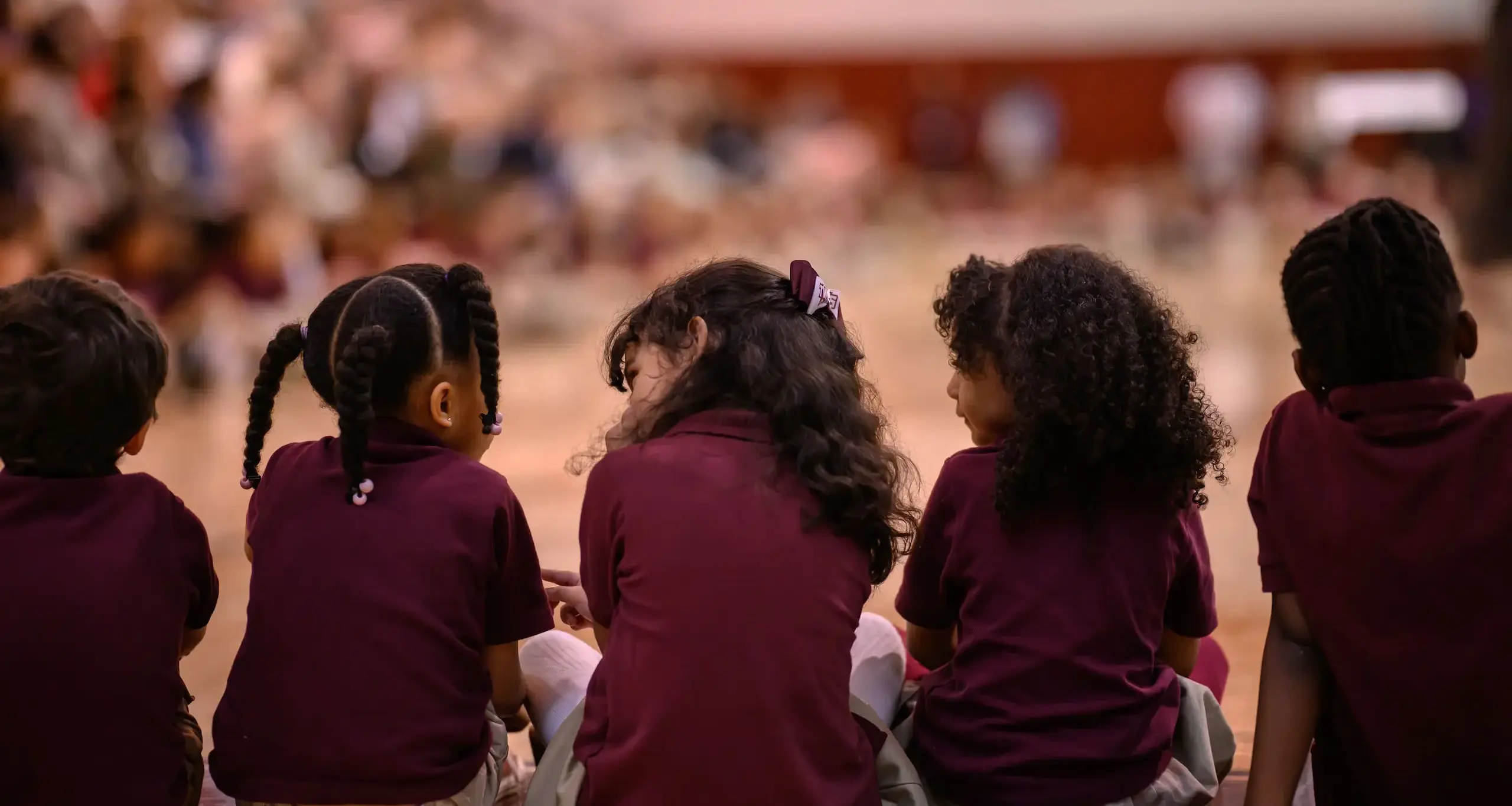Our program not only focuses on building the fundamental academic skills for success in school but on developing skills to help students adapt and thrive in an ever-changing world.
Students in grades 1-5 hone their phonic awareness to improve reading, writing and vocabulary. They tackle fundamentals of math, building number sense and preparing for more complex abstract thought. They learn the intricacies of the scientific method to begin making sense of the world around them, and they start to look at history and the social studies as more than just facts and dates and people and places but as forces that shape their world.
MATH
Problem-solving is at the center of math learning, and in the Lower School, the concepts are taught with a concrete–pictorial–abstract learning progression through real-world, hands-on experiences. Students first investigate mathematical concepts through the use of hands-on manipulatives. They then move on to the pictorial stage in which pictures are used to model problems. Later, when students are more familiar with the ideas taught, they progress to the abstract stage in which only numbers, notations and symbols are used. Instruction focuses on mathematical thinking and the application of skills to problem-solving. Students learn to understand the “how” and the “why” so they can tackle both routine and non-routine problems.
In the Lower School, math lessons are taught in both whole-group and small-group settings. Teachers use this flexibility to best meet the needs of all their mathematical learners. In fourth and fifth grades, the teaching of math is departmentalized. Through on-going assessment, teachers are able to differentiate math instruction, adding additional support where required and providing challenges to stretch thinking where needed. Above all, it is important that all Lower School students not only see the importance of mathematics, but also see themselves as capable, confident mathematicians.
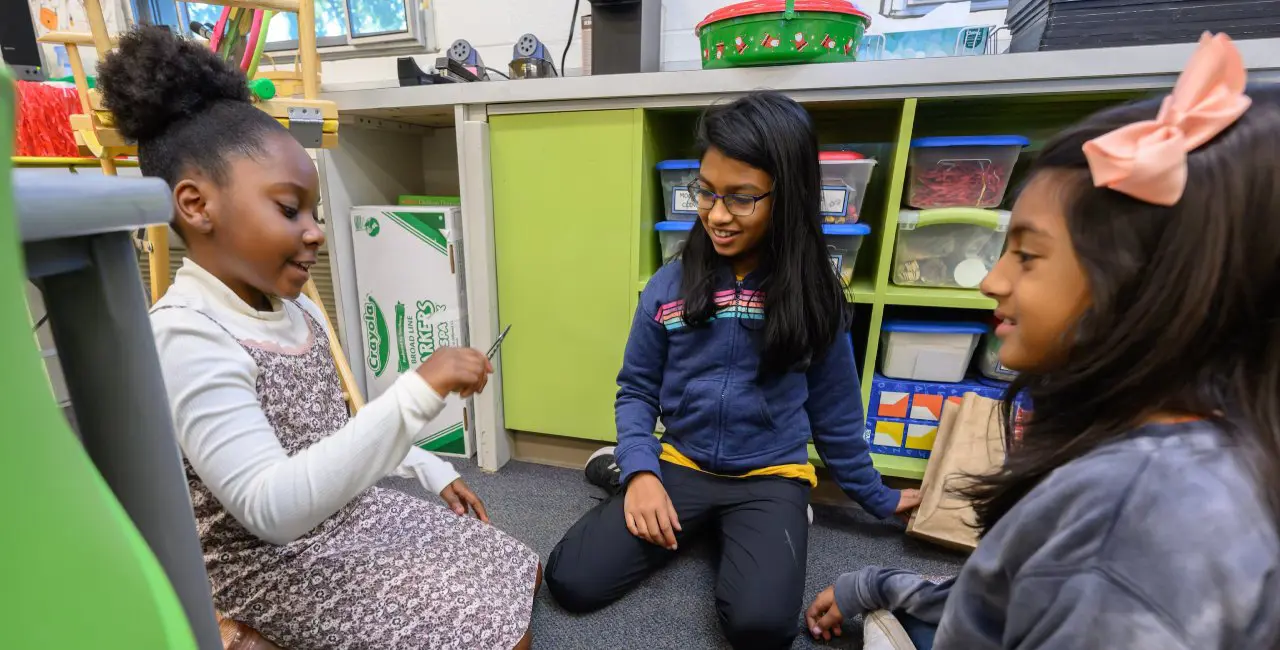
READING
In the Lower School, reading instruction is customized to target students’ strengths and needs in a developmentally appropriate manner. In the early grades, explicit Orton-Gillingham multi-sensory phonics instruction builds a solid foundation for students in the areas of phonemic awareness, spelling patterns and decoding. In the first, second and third grades, the teachers employ many tools for reading instruction meeting each student’s specific reading goals. With a focus on teaching strategies in the areas of comprehension, accuracy, fluency and vocabulary, first, second and third graders are exposed to purposefully selected picture books each week. Students are actively engaged in listening to and discussing each text throughout the read-aloud. Before, during and after the read-aloud, teachers guide book conversations through thought-provoking discussion questions. The learning process continues by targeting specific skills and standards as students interact with this text all week. Activities for each text are designed to ensure students are actively thinking, making connections and responding to the text in a meaningful way. This curriculum focuses on deepening comprehension, developing and expanding vocabulary and integrating language skills with the use of a mentor text.
Fourth- and fifth-grade students continue to build comprehension, fluency and vocabulary through novel studies.
The “40 Book Challenge” is an activity designed specifically for our fourth and fifth graders to provide an additional aspect to the development of independent reading across a variety of genres.
Summer reading is encouraged, and the Winship Library is open each Wednesday for students to check out books and board games. Each grade level has a specific book students read over the summer in preparation for August. Parents have the option of reading the book with their child, having their child read it independently or listening to the book on Learning Ally.
_520.webp?version=638587101065330000)
SCIENCE
In the Lower School, Walker students use a hands-on, inquiry-based science curriculum that provides students with experiences appropriate to the students’ developmental levels. Students often work in collaborative groups as they use the scientific processes to explore a variety of content areas. At each grade level, the science content reflects the latest scientific research with a blend of physical, earth and space and life sciences.
In the first, second and third grades, units of study within the FOSS (Full Option Science System) curriculum provide diverse opportunities for investigation of scientific concepts. These units of study spiral to provide students with multiple exposures to concepts and include the following pedagogies:
- Active investigation, including outdoor experiences
- Recording in science notebooks to answer questions and reflect
- Reading non-fiction materials to further investigate or understand
- Formative and summative assessment measures to support and guide learning
In fourth and fifth grade, students explore the content areas of chemistry, zoology (vertebrate and invertebrate), botany and ecology. The units of study are used as a basis for gaining awareness of the scientific methods of observing, comparing, organizing, relating and classifying, hypothesizing, drawing conclusions and applying learned principles. Students integrate the scientific process with research and writing skills in preparation for upper-level science classes.
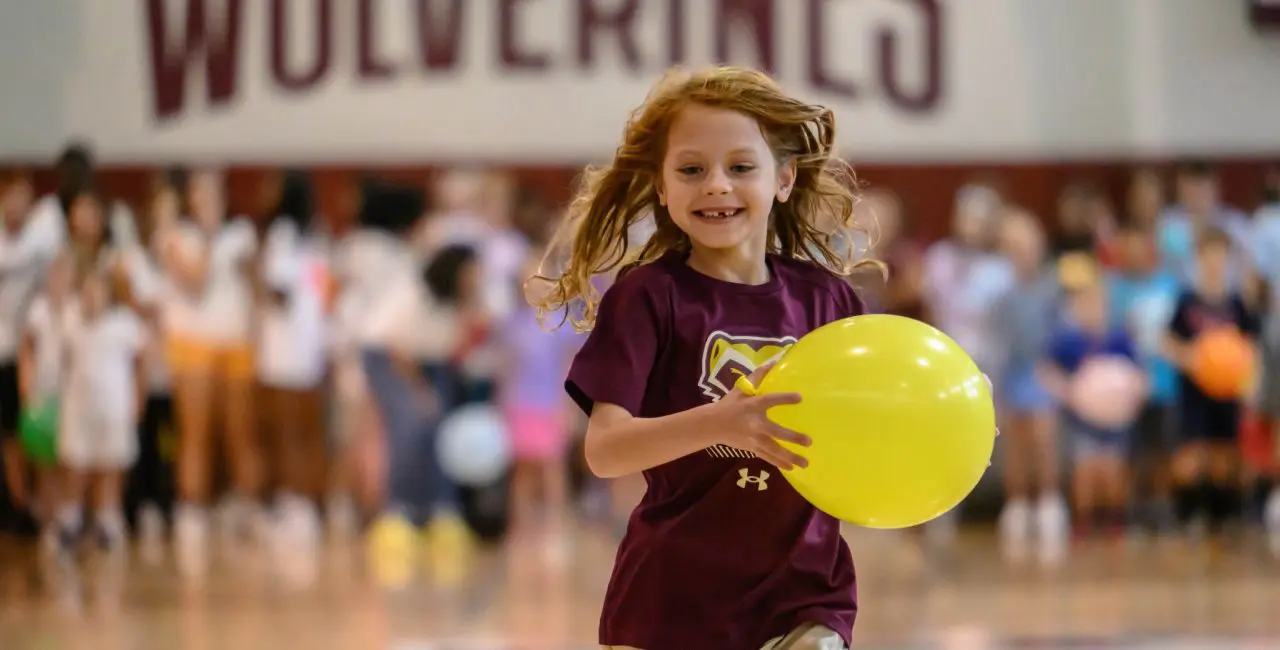
SOCIAL STUDIES
Through the study of social studies and history, Lower School students gain a greater understanding of people, culture, the nation, and the world around them. On this journey, students explore a variety of times and places. They are encouraged to explore how people relate to one another, to observe patterns of change and to understand the reactions of people or groups of people to that change. Students are asked to make connections between current events and to those that occurred in the past. The exploration of history is based on the study of thematic units in first through third grade. The fourth and fifth grade study follows the formation and growth of the United States.
Students develop a wide range of skills throughout their studies. Students learn important local, national and global geography as well as important note-taking and study skills. Walker students hone non-fiction reading skills through a variety of resources, including textbooks, primary sources, newspapers, magazines and online databases. Critical thinking and the importance of asking questions are emphasized. The social studies program includes multicultural perspectives, hands-on experiences, field trips and numerous opportunities to share student learning outside of the classroom. Technology skills are woven throughout the curriculum. Social studies units are integrated with other academic and co-curricular subjects when possible.
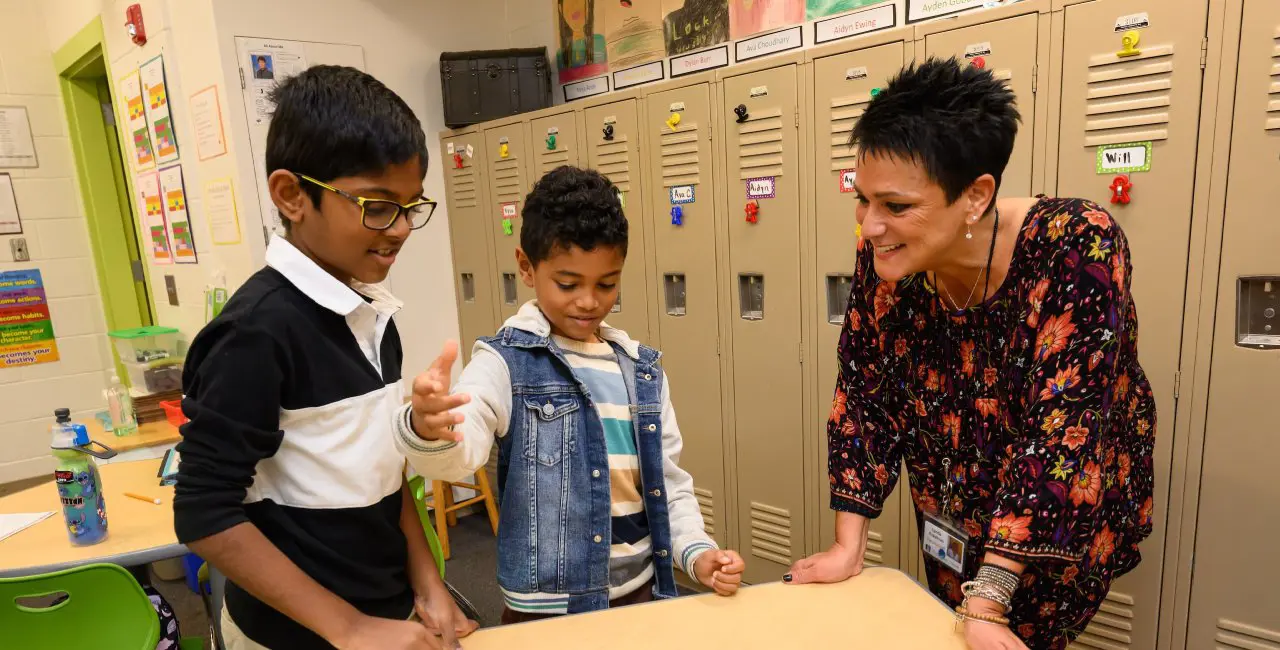
C0-CURRICULAR
Co-curricular classes contribute to the development of well-rounded, confident students. Classes in art, media/technology, music, physical education, science, Spanish and guidance provide students with additional opportunities to explore personal interests while challenging themselves in new ways.
| Art |
|---|
|
In the Lower School, the art program is designed to give first- through fifth-grade students an introduction to art that will prepare them for Middle and Upper School art classes. The curriculum offers well-rounded and varied art experiences in the Lower School Art Lab. Assignments and activities are planned as opportunities for problem-solving as the students work with a wide range of media and techniques, projects and themes at each grade level. Students are encouraged to talk about their artwork and that of professional artists as they become familiar with the Elements of Art. The year culminates with the Lower School Art Show, where hundreds of pieces of student art are displayed. Studio art classes offer a unique learning environment where analytical and intuitive abilities can be developed. In the Lower School, children study art concepts through instruction in painting, sculpture, drawing, collage and printmaking. Children are introduced to many materials, including watercolor, tempera, acrylic, clay, pastel, ink, papier-mâché and mixed media. |
| Library |
|
Lower School students, faculty and staff are surrounded by nearly 20,000 volumes in the Winship Library. Students proactively learn to locate, analyze, evaluate and communicate information and ideas. From student search stations to a dynamic SmartBoard, and welcoming collaborative seating design, Winship Library boasts an ideal environment for students to grow into young scholars, readers, researchers, makers, thinkers, and storytellers. Winship Library seeks to foster a deep appreciation of literature and establish a lifelong love of reading. Students enjoy access to online newspapers, age-appropriate periodicals and a variety of digital equipment thanks to our collaboration with the Media Tech Lab. A completely automated public access Destiny catalog provides author, title, subject, series and keyword access to the print and non-print resources. The layout and organization of the space lends itself to child-led selection of content: from easy reader, easy picture and Caldecott sections to groundbreakers, biography and a fully genrefied collection of fiction books. We strongly value reading for enjoyment; one will often find the room filled with the sounds of students reading for pleasure and sharing books with one another. Students visit Winship for instruction on a fixed schedule for both literacy classes and checkout opportunities, though students are encouraged to regularly visit the library to exchange books. Stories, thematic studies, creative writing and library skills instruction form part of the curriculum for each grade. |
| MUSIC |
|
In the Lower School, musical instruction is an integral part of our students’ education as it develops collaborative teamwork, self-discipline and an aesthetic sense of culture. Teamwork is essential as students collaborate by unifying multiple skills such as eye/hand coordination, breath control and body movement as a whole unit within a class. Self-discipline is enhanced as students hone their skills to be showcased in front of an audience, and the study of music history provides insight into the lifestyle and values of cultures throughout history. At Walker, the integration of musical instruction into a child’s academic and co-curricular program makes for a well-versed individual. In the music classroom, students are exposed to multiple methods of instruction to learn musical concepts. The elements of music are rhythm, melody, harmony, dynamics, form, tempo, meter and timbre, all of which spiral through the curriculum. In the Lower School, strategies include Solfegé with Kodály hands signs for singing and the Orff-Schulwerk methodology for instrument instruction to create well-rounded units of study. Technology is also highly integrated into the curriculum as today’s music students need the technological skills to thrive in an ever-changing society. |
| Physical education |
| In the Lower School, the physical education program is designed to introduce students to basic physical fitness concepts, cooperative games, locomotor skills, spatial awareness and sports development activities. An important priority of Walker’s physical education program is to teach skills and build self-confidence to enable students to embrace new challenges through enjoyable experiences that promote healthy, active lifestyles. The physical education program is a sequential curriculum that uses movement as a medium for growth and self-discovery. The diverse curriculum is designed to develop skills, fitness and a lifetime commitment to wellness. Discussion of issues relating to health, nutrition and exercise permits students to critically analyze their lifestyles and make educated choices for their futures. |
| SPANISH |
|
Walker’s Lower School Spanish program is designed to support students as they develop skills to communicate effectively in the global world, to create more awareness of other cultures and to increase appreciation and knowledge of world languages. The curriculum develops the skills of listening, speaking, reading, writing and cultural competency through the use of hands-on activities, games and teaching strategies using a method called TPR (Total Physical Response). Our teachers pair the learning of language with physical movement to aid in the retention of a new language. In class, students experience excitement and enthusiasm about learning Spanish. The Spanish language is taught, and there are many other components that are also introduced such as culture, art, music and cuisine. Actively engaging students with cooperative and collaborative groups gives them the desire to learn more and creates a positive and enjoyable environment that motivates them to participate energetically in activities. |
| Technology |
|
In the Lower School, we believe that an understanding of technology is essential to ensure that students thrive in an ever-changing world. However, we do not believe that the use of technology should take the place of a teacher’s important role in the classroom. Building the foundation for reading, writing and number sense is of utmost importance in the elementary grades. Technology can bridge these fundamentals with the future. Although our students are often more comfortable with the use of technology than the adults around them, schools and parents have the important job of guiding how best to apply these powerful tools to complex learning and creative tasks. The Lower School technology curriculum has several main strands: Digital Citizenship, Word Processing & Keyboarding, Microsoft Office, Robotics, Programming, Technology Fluency & Research Skills, Photography and Creativity & Collaboration. The Lower School campus is equipped with a dedicated computer and technology lab as well as four mobile laptop/tablet carts to bring technology into classrooms. Students use a variety of software and different forms of technology to learn the basic skills needed to explore how word processing, spreadsheets, databases, web design, presentation tools, digital cameras and subject-specific software enhance their educational experience in all areas of the curriculum. Students work individually or in small groups on structured assignments, activities and projects. Many of these integrate closely with the units they are studying in academic and other co-curricular classes. Most importantly, students learn to use technology in a respectful, responsible and safe manner. |
| Counseling |
The Lower School counseling program’s mission is to:
|

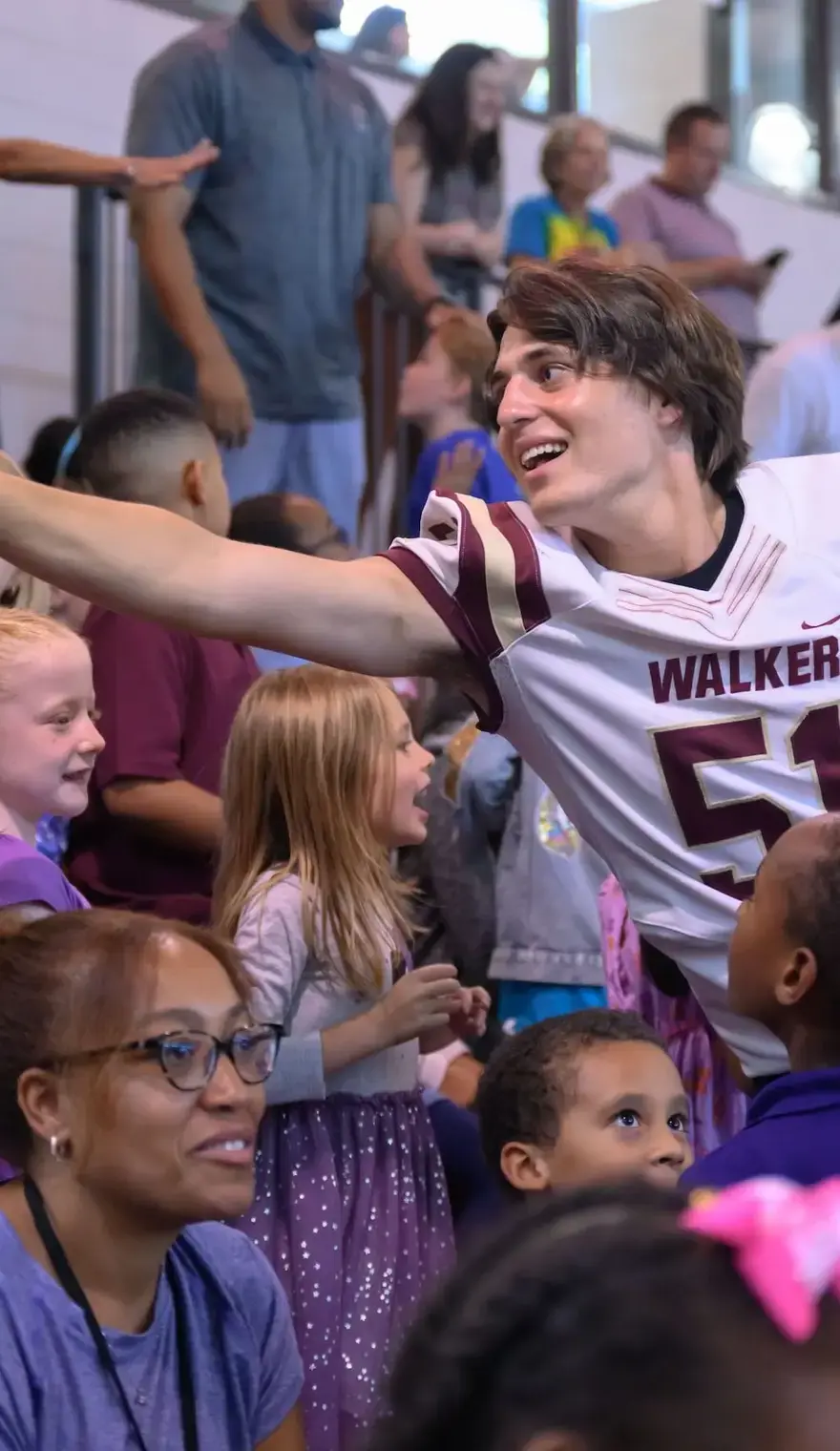
_504.webp?version=638587098446000000)
